Splice Byte XD-300: Unterschied zwischen den Versionen
Erscheinungsbild
Keine Bearbeitungszusammenfassung |
|||
| (25 dazwischenliegende Versionen von 6 Benutzern werden nicht angezeigt) | |||
| Zeile 1: | Zeile 1: | ||
Splice | {| valign="top" | ||
{{Infobox_Bild | |||
| Titel = Splice Byte XD-300 | |||
There are some minor differences, for example, the pads between the keypad and the sensors underneath the board are very different giving a different feeling when you press the keys. Not better or worse, just different. Also, it uses a true speaker instead of a piezo beeper as in the Fidelity Chess Challenger 7. | | Bild = [[Bild:Splice Byte 1.JPG|center|350px]] | ||
C Picture by [http://www.chesscomputeruk.com/ Michael Watters - Chess Computer UK] | |||
| Bild2 = [[Bild:Splice Byte 2.JPG|center|350px]] | |||
C Picture by [http://www.chesscomputeruk.com/ Michael Watters - Chess Computer UK] | |||
| Hersteller = [[Splice]] | |||
| Markteinführung = {{Erscheinungsjahr|1980}} (?) | |||
| Preis = | |||
| Prozessor = [[Zilog Z80|Z80]] | |||
| Prozessortyp = [[8 Bit]] | |||
| Takt = ~3,6 MHz (3,582 MHz) | |||
| RAM = 256 Bytes | |||
| ROM = 4 KB | |||
| Bibliothek = 69 Positionen | |||
| Programmierer = [[Nelson, Ron]] | |||
| Elo = 1311 | |||
| BT-2450 = | |||
| BT-2630 = | |||
| Colditz = | |||
| Rechentiefe = | |||
| Verwandt = [[Fidelity Chess Challenger 7]] | |||
| Zugeingabe = [[Tastatur]] | |||
| Zugausgabe = Display | |||
| Display = 4-stellige 7-Segment LED Anzeige | |||
| Stromversorgung = Netzteil: 9V/350mA DC (Cinch-Stecker, Plus innen) | |||
| Spielstufen = 7 | |||
| Maße = | |||
| Sonstiges = Clone of the Fidelity Chess Challenger 7 | |||
| Infos = | |||
An analysis of the XD-300 revealed what '''it seems to be a clone of the Fidelity Chess Challenger 7'''. There are some minor differences, for example, the pads between the keypad and the sensors underneath the board are very different giving a different feeling when you press the keys. Not better or worse, just different. Also, it uses a true speaker instead of a piezo beeper as in the Fidelity Chess Challenger 7. But the hardware architecture is the same (CPU type and signal clock, RAM, etc.), and '''the content of the ROM is identical'''. | |||
}} | |||
|} | |||
<br style="clear:both;" /> | |||
== Comparison with Fidelity Chess Challenger 7 == | |||
[[Bild: | {| style="float:left; background:transparent; padding:0px; margin:0px;" | ||
|[[Bild:Splice_Byte_XD-300_Inside.jpg|thumb|350px|Speaker instead of Buzzer]] | |||
|[[Bild:Splice_Byte_XD-300_CPU.jpg|thumb|350px|CPU: Z80 at 4MHz as Fidelity CC7]] | |||
|- | |||
|[[Bild:XD-300_vs_CC7.jpg|thumb|350px|Fidelity CC7 vs Byte XD-300]] | |||
|[[Bild:Splice_Byte_XD-300_ROM.jpg|thumb|350px|The ROM are equal bitwise!]] | |||
|- | |||
|[[Bild:Splice_Byte_XD-300_PCB2.jpg|thumb|350px]] | |||
|} <br style="clear:both;" /> | |||
[[Bild: | '''C Pictures by''' [http://www.chesscomputeruk.com/ Michael Watters - Chess Computer UK] | ||
{| style="float:left; background:transparent; padding:0px; margin:0px;" | |||
|[[Bild:Splice_Byte_3.jpg|thumb|350px|This seems like a modern (and patched) version of the same computer (1982?)]] | |||
|} <br style="clear:both;" /> | |||
== Weblinks == | |||
[http://www.ismenio.com/chess_byte_xd300.html] | * [http://www.ismenio.com/chess_byte_xd300.html Chess Byte XD300] by [http://www.ismenio.com/chess_computers.html ChessComputers.org] | ||
* [http://www.chesscomputeruk.com/html/splice_byte_xd_300.html Splice Byte XD 300] by [http://www.chesscomputeruk.com Chess Computer UK] | |||
* [http://www.schaakcomputers.nl/hein_veldhuis/database/files/05-1980%20%5BD-0101%5D%20Splice%20-%20Byte%20XD-300.pdf Splice - Byte XD-300] aus der [http://www.schaakcomputers.nl/hein_veldhuis/database/ Datenbank von Hein Veldhuis] | |||
[[Kategorie:Schachcomputer]] | |||
[[Kategorie:Splice]] | |||
[[Kategorie:Z80]] | |||
[[Kategorie:Nelson, Ron]] | |||
Aktuelle Version vom 7. Februar 2024, 12:11 Uhr
| Splice Byte XD-300 | |||
|---|---|---|---|
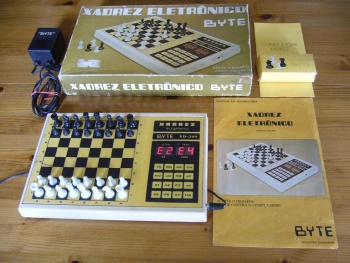 C Picture by Michael Watters - Chess Computer UK |
|||
| Hersteller | Splice | ||
| Markteinführung | 1980 (?) | ||
| CElo | 1311 | ||
| Programmierer | Nelson, Ron | ||
| Prozessor | Takt | RAM | ROM |
| Z80 | ~3,6 MHz (3,582 MHz) | 256 Bytes | 4 KB |
| Rechentiefe | BT-2450 | BT-2630 | Colditz |
| Bibliothek | 69 Positionen | ||
| Display | 4-stellige 7-Segment LED Anzeige | ||
| Spielstufen | 7 | ||
| Zugeingabe | Tastatur | ||
| Zugausgabe | Display | ||
| Einführungspreis | |||
| Prozessortyp | 8 Bit | ||
| Stromversorgung | Netzteil: 9V/350mA DC (Cinch-Stecker, Plus innen) | ||
| Maße | |||
| Verwandt | Fidelity Chess Challenger 7 | ||
| Sonstiges | |||
| Clone of the Fidelity Chess Challenger 7 | |||
| Infos |
|---|
| An analysis of the XD-300 revealed what it seems to be a clone of the Fidelity Chess Challenger 7. There are some minor differences, for example, the pads between the keypad and the sensors underneath the board are very different giving a different feeling when you press the keys. Not better or worse, just different. Also, it uses a true speaker instead of a piezo beeper as in the Fidelity Chess Challenger 7. But the hardware architecture is the same (CPU type and signal clock, RAM, etc.), and the content of the ROM is identical. |
Comparison with Fidelity Chess Challenger 7
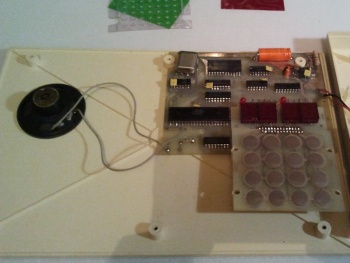 |
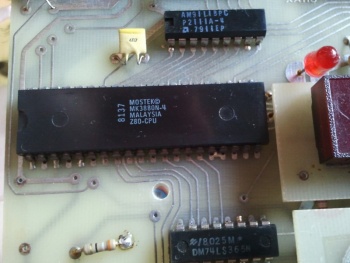 |
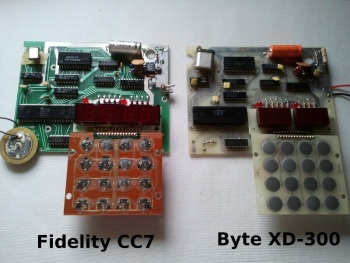 |
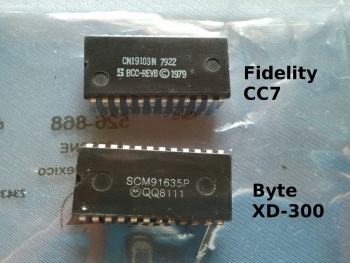 |
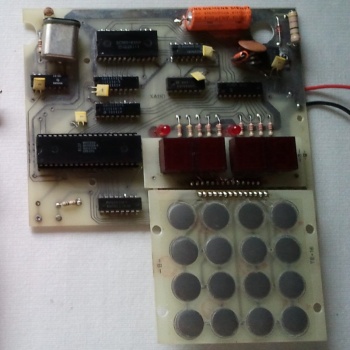 |
C Pictures by Michael Watters - Chess Computer UK
 |
